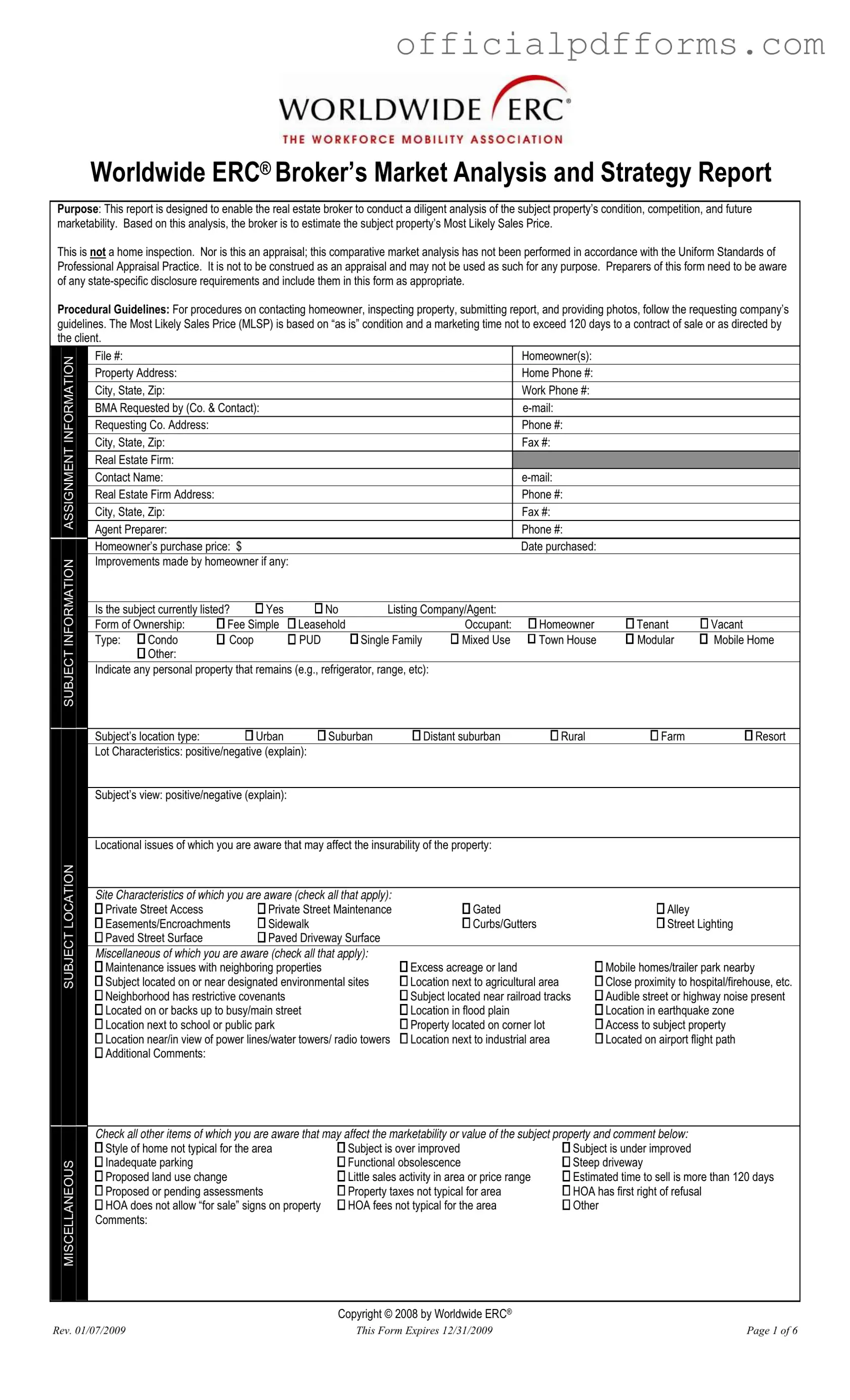Fill in a Valid Erc Broker Market Analysis Form
The Worldwide ERC® Broker’s Market Analysis and Strategy Report is a vital tool for real estate brokers. It allows them to thoroughly evaluate a property’s condition, its competition, and its potential marketability. By utilizing this form, brokers can estimate the Most Likely Sales Price, ensuring informed decisions for their clients.
Ready to get started? Fill out the form by clicking the button below!
Access Form Online
